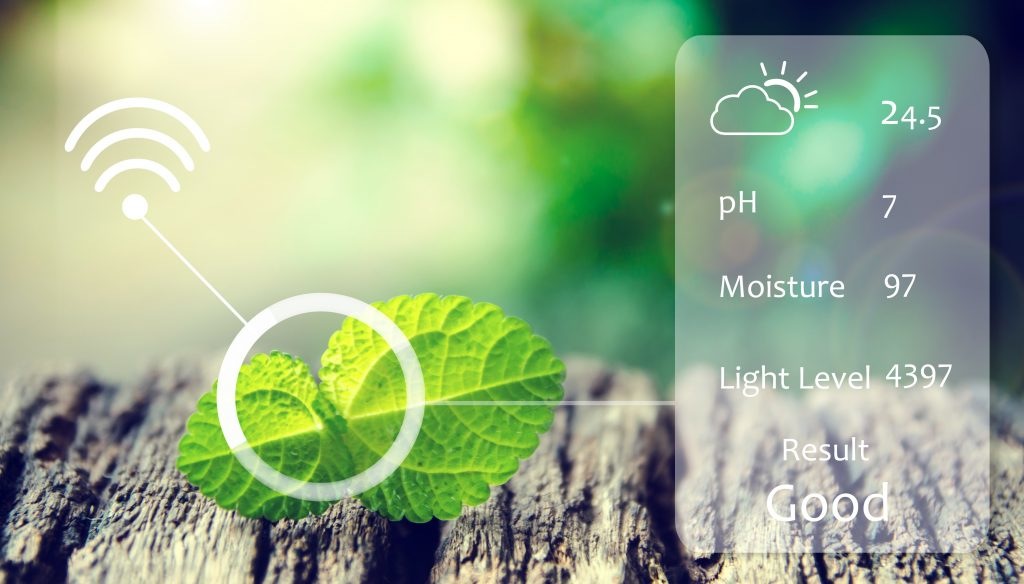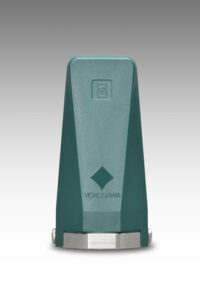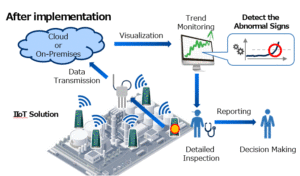Smart Factory, Smart Home, Smart Sensors- smart devices are on the rise. But what are smart sensors and what makes them smart, i.e. intelligent? What distinguishes them from conventional sensors? How can a company benefit from smart sensors?
What are Smart Sensors?
Sensors record measured variables such as temperature, pressure or volume. In addition, they combine signal conditioning and signal processing. The small all-rounders usually are equipped with a microprocessor or microcontroller, partly also with DSP functionality. Smart sensors communicate digitally from signal processing onwards so that there are no unnecessary A/D and D/A conversion processes.
Such complex sensors, which are able to communicate with other devices, are quite intelligent and are therefore called smart. They create a basis for the Industrial Internet of Things, or IIoT for short. The devices are not only digital but also interconnected and able to communicate with each other.
The mini-sensors are based on microtechnology, nanotechnology and microsystems technology. They can have the following interfaces: SENT, LIN-BUS, Ethernet, Profibus, USB, FireWire, LoRaWAN, in future also 5G.
Smart Noise Sensors
Smart sensors can be used almost anywhere. Smart sensors such as noise sensors are also used in hospitals. With the help of noise sensors, it is possible to find out at which times a lot of noise is produced. The aim is to change human behavior and, for example, to avoid loud noises at night, i.e. at bedtime.
Smart Sensors in der Agriculture and Farming
In agriculture, smart sensors can help save water. Special sensors for measuring soil moisture can inform the farmer about the exact condition of the field soil and how much water is needed. Soil health is maintained, no water is wasted and yields are increased. Smart sensors can, therefore, help to conserve resources. In agriculture, water savings of up to 30 percent can be achieved.
Why we can recommend the Sushi-Sensor as a Smart Sensor
Have you ever heard of the Sushi Sensor? If not, then it’s about time. The Sushi Sensor is rather inconspicuous: A small, compact, wireless device in dark green. But the little one has it all. Equipped with integrated scanning and communication functions, it was specially developed for monitoring vibrations and surface temperatures of plant equipment. It monitors the operating conditions of devices online and improves plant maintenance. The data collected by the sensor is recorded in a Condition Based Maintenance (CBM) dashboard and thus improves plant availability. Its results allow anomalies in equipment operation to be detected more quickly, ideally even before the equipment fails.
All-Rounder with LoRaWAN
The vibration and surface temperature of plant equipment such as compressors, pumps, and motors should be measured and monitored frequently in order to detect equipment anomalies as quickly as possible. In places that are difficult to access, it can be difficult to connect products that are wired up. Imagine dozens of cables in a device that cannot be reached without tools. Chaos is inevitable, isn’t it? It is therefore advisable to use wireless vibration and temperature sensors that can be installed easily and inexpensively. The Sushi Sensor uses LoRaWAN, a wireless communication technology that is used specifically for long-distance communication. The monitoring of rivers and canals, machines in extremely cold or warm environments? The perfect application for the wireless LoRaWAN. The power requirement is low. The LoRa Alliance comprises more than 500 IoT companies and users worldwide.
We have designed the Sushi Sensor to be extremely robust. It defies wind and weather, combines complex technologies in a small, compact housing and can also be used in hazardous areas. The wireless, lightweight Sushi Sensor can be mounted anywhere. Like Japanese sushi, it is simple and professionally produced to the highest standards. A wireless repeater is not necessary. As it is battery operated, no external power supply is required. In the future, artificial intelligence (AI) and machine learning (ML) could be used to predict errors in the system earlier.
Sushi-Sensor as a Growth Driver
In the oil & gas sector, vibration sensors such as the Sushi Sensor are used in rotating equipment such as motors, pumps, fans, etc. Most of these devices are still not monitored. For maintenance, the maintenance engineers in the plant must manually check the condition of the equipment. When the Sushi Sensors are installed on these devices, manual inspection is often unnecessary. Instead, the maintenance engineer can use a dashboard to check the status of all connected devices. Warnings are displayed when maintenance is required.
Smart sensors are used to ensure system availability and avoid failures. Dashboards display pending maintenance, eliminating the need to check individual devices. This saves personnel costs and ensures the safety of the personnel. The sensors help to significantly reduce the lifecycle costs of assets and guarantee faster growth through increased plant availability.






